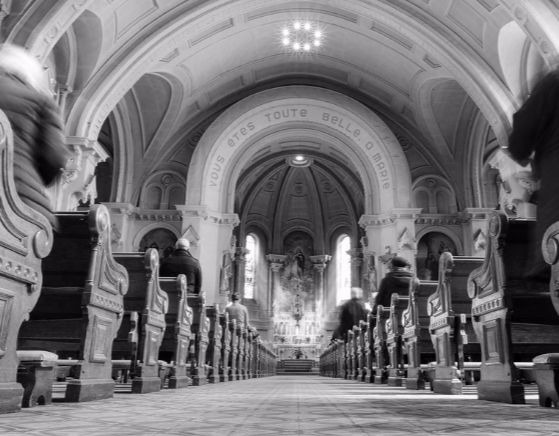While We’re On the Topic of Megachurches…

{source}
Hey, Joel, looks like the media might have gotten this one wrong. Here’s an apology for incorrectly assessing the situation as far as access to Lakewood megachurch.
You’re off the hook for not using your church in a church-like fashion.
Apparently, Lakewood megachurch was rendered inaccessible due to severe flooding during hurricane Harvey. The facility couldn’t provide the shelter that so many Texans felt Osteen deprived them of because authorities declared the church too difficult to reach. It’s still not clear whether or not Osteen purposefully denied access or if it was a genuine misunderstanding.
Scrutiny aimed at Osteen may have been wrongfully placed. Either way, the timing of the situation does force us to take a good look at exactly what the megachurch model comprises. Is this really the best way to worship?
A Renaissance for the Church
We have the televised worship movement of the 70’s and 80’s to thank for the concept of the megachurch. Congregations in the thousands can be traced back as far as the 1950’s, but in the modern era, establishments like Lakewood and the Second Baptist Church entertain upwards of 20,000 people.
A megachurch is defined as a non-Catholic congregation with at least 2,000 followers. There are around 1,300 known megachurches in the United states today.
These institutes are known for practicing a modern approach to worship that includes theatrical performances. They also have highly organized businesslike structures within the church organization. In many cases, worshipers can take part in different programs organized through the church and nourished by the large denomination.
But in recent years, interest for these types of churches has waned. Young people born into Christian life have started to resent the spectacular nature of churches like Osteen’s, and have endorsed a more back to basics approach to spirituality.
Separating Worship From Noise
Those who study communication will be familiar with the concept of noise. From a communications standpoint, noise isn’t just audible sound, but any interference that can cause one’s intended message to be confused or obscured.
Religion in its simplest form is about a connection between a person, their faith and their community. Before technology brought the world together, small villages relied on religious gatherings as a way to keep tabs on friends and family and develop bonds.
In the megachurch model, much of this aspect of religion goes away. Fellow worshipers identify as followers of the church, but they might not see the same person again in the course of their entire life. Attention that would have been directed toward bonding goes to whatever is happening on the stage. A part of Christianity central to churches of the past has been pushed aside by noise.
Back to Basics
Christians have demonstrated their willingness to change on this matter, particularly young people. Many groups that choose not to adopt the megachurch approach have found comfort in smaller programs that emphasize public service over theatrical displays.
Youth seek a way to bring religion back to a place that is tangible, even, perhaps, for non-believers. Critics can make short work of a televised pastor performing miracles in front of a crowd, but it’s harder to find fault in a group of worshipers building homes in third-world countries or feeding the poor.
Public image is important in a time when more Americans are questioning their beliefs, and megachurches fall short of being genuine. In contrast to Osteen’s Your Best Life Now approach, which emphasizes overwhelming positivity that many see as fake coming from someone who’s never endured hardship, the tone of this new movement is more realistic.
Twilight of the Megachurch
Does this mean megachurches are going away? Probably not. There’s nothing inherently wrong with choosing to worship at a large facility and as part of a large congregation. It just doesn’t seem to align with the values that many people feel Christianity has been overlooking in recent years.
The religious community has to choose whether they will be true to their core beliefs or continue to bastardize their religion by making it a spectacle, both in the church and in the political arena. Not everything about the business-like model that megachurches employ sits well compared to the humble beginnings of Jesus Christ.
The church is nothing without followers. Ultimately they will decide what makes the Christian religion.
***
{Join us on Facebook, Twitter, Instagram & Pinterest}
